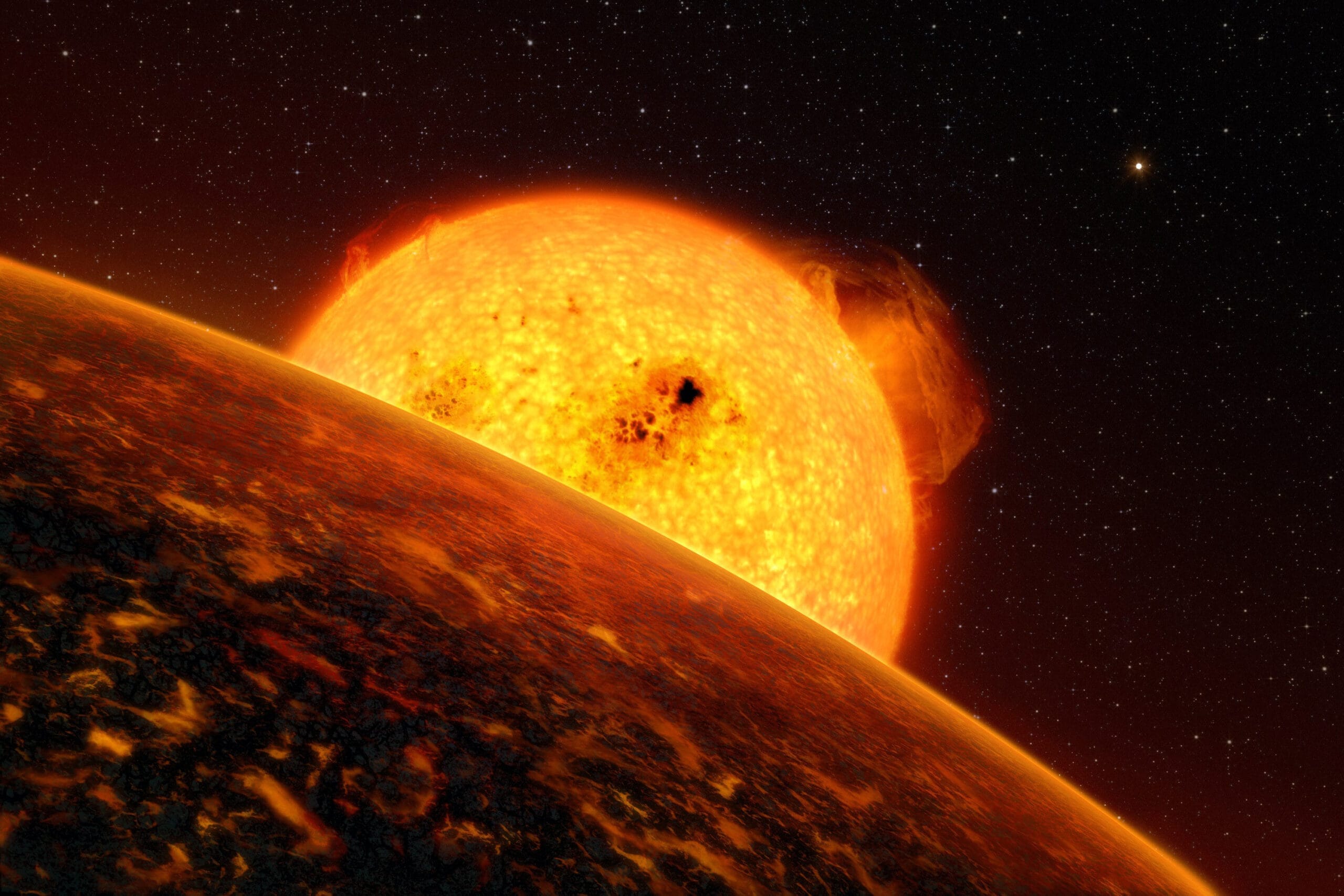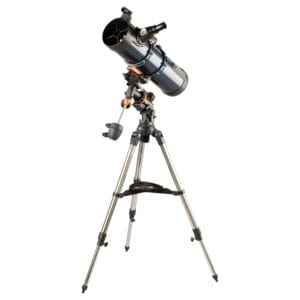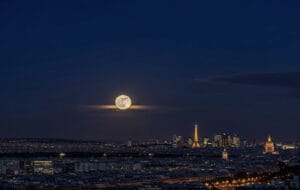If you thought HD 189733 b was already unimaginable with its glass rains and turbulent weather patterns, COROT-7b certainly won’t disappoint. This exoplanet might be one of the most bizarre worlds we’ve discovered so far. Located just 480 light-years away from us in the Unicorn constellation, it’s considered the first “lava world” ever discovered. Its surface resembles nothing we know on Earth – imagine a constantly boiling planet where rock literally melts and even vaporizes into the atmosphere. Here’s everything you need to know about this extreme planet that defies all expectations.
Extremely Close to its Star
COROT-7b orbits so close to its star that it only needs 20 hours for a complete revolution. To put this in perspective: while Earth takes 365 days to orbit the Sun, a year on COROT-7b lasts less than one Earth day. This proximity means the planet is constantly exposed to intense radiation and heat. On the dayside, temperatures quickly reach around 2600°C, hot enough to liquefy rock and even vaporize it.
A World of Fire and Glowing Air
Due to the extreme heat on the dayside, rock transforms into a glowing sea of lava, and even the atmosphere is filled with vaporized minerals. This creates a landscape that seems to constantly boil and bubble. This “atmosphere” on COROT-7b is unlike anything we know on Earth – it consists of rock vapors, such as silicon oxide and iron, which transform into a rocky mist hovering over the surface due to the heat. Here, it’s not water that evaporates and rains, but rock that rises and disappears into the thin air.
Rock Rain – Yes, it Exists
Perhaps the most fascinating aspect of COROT-7b is the phenomenon of ‘rock rain’. On the dayside, rocks are first melted by the intense heat and then vaporized, after which they rise into the air and drift to the colder nightside of the planet. On the nightside, where temperatures drastically drop to around -200°C, the rock vapor condenses and falls back to the surface in the form of stone grains. This means that rocks literally fall from the sky on COROT-7b. The idea of a shower of small stones instead of water is almost unimaginable and illustrates just how extreme the climate on this planet really is.
A Planet that Keeps Changing
COROT-7b remains a mysterious object for scientists. Due to its continuous exposure to the intense heat of its star and the vaporization of its surface rock, the planet possibly loses small amounts of mass each year. This means it’s slowly “dissolving”, as the stellar wind from its parent star constantly blasts away pieces of the planet. Some even speculate that COROT-7b was once a gas giant that came too close to its star and lost its gas layer due to the heat, leaving behind a bare, fiery rocky world.
What COROT-7b Can Teach Us about the Universe
COROT-7b gives us a glimpse of how dynamic and surprising planets outside our solar system can be. While we’re used to planets with atmospheres of gas, clouds, and oceans, it’s something entirely different with a planet like COROT-7b. This unique world shows that not all planets in the universe are like Earth or even like gas giants such as Jupiter. Some exist in conditions so extreme that it’s difficult to imagine they actually exist.
COROT-7b also shows us that galaxies and solar systems can produce an enormous variety of planet types, each with unique properties and environments that seem incredible even in our wildest dreams. For astronomers, COROT-7b is a valuable source of information about how planets can form and change under extreme conditions.
Conclusion: the Unimaginable Reality of COROT-7b
COROT-7b isn’t just any planet – it’s a fiery, boiling world of stone rain and extreme heat, a landscape that goes far beyond any conception of our own Earth. Its incredible proximity to its star, the boiling surface, the unique rock rain, and its possibly tragic “evaporation” make COROT-7b a world full of mysteries. By observing planets like COROT-7b, we discover more about the versatility of planets in our universe and get a unique look at how incredibly varied the cosmos truly is.
Stay tuned for more exciting discoveries in the series Planets You Won’t Believe Exist. The wonders of the universe await us – and there are many more unimaginable worlds yet to explore.








